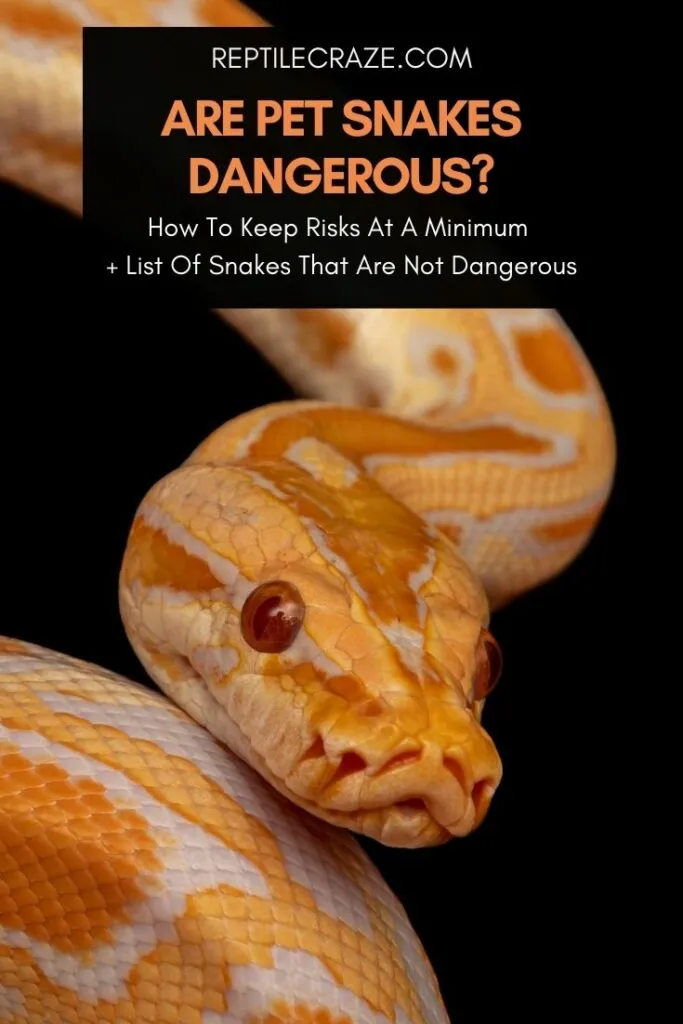
My friend’s son wants a pet snake, but as my friend put it: “aren’t snakes dangerous?” This is an important question, but it’s equally important to realize that beginner snakes are never dangerously venomous.
Most pet snakes are not dangerous, in of themselves. You require special permission to own any seriously dangerous animal, so most common pet snake species are relatively harmless. However, some constrictors and mildly venomous snakes can cause issues due to bacteria in their mouths and feces.
So, while you won’t be getting eaten or shoved into the back of an ambulance because of your pet snake any time soon, there are still some considerations you should keep in mind to keep both your snake and you, safe. Read on to find out more, especially if you want to know which snakes are safe to own.
Table of Contents
Can a Pet Snake be Dangerous?
Many types of pets can be dangerous. In the US alone, 800,000 people seek medical attention due to dog bites, each year. 400,000 cat bites occur in the same timeframe, with 50% of all cat bites in children resulting in infection.
Injuries brought about by pet snakes are much rarer than this. The vast majority of the 81,000 to 138,000 fatalities brought about by a snake each year, globally, involve encounters with snakes in the wild.
In fact, of the more than 1 million pet snakes in the US, there are only around 6 fatalities per year, and these always involve snakes that are known to be dangerous, not the common type of pet snake most snake keepers enjoy housing.
Even when it does come to venomous animals in the US, bees and wasps are many orders of magnitude more dangerous than mildly venomous pet snakes.
None of this means that a pet snake can’t be dangerous, but it does illustrate that your cute little puppy is more likely to cause a trip to a hospital for you or a family member than your snake buddy, happy in his or her enclosure.
While most pet snake species are relatively docile, there are some dangers you should think about before taking the plunge and buying a pet snake. Especially if you are considering a large species.
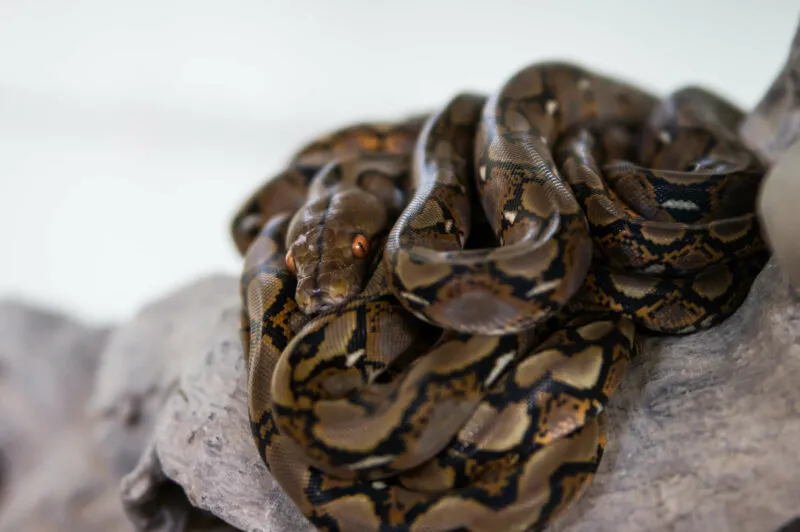
The Dangers of Keeping a Snake
Owning a snake is incredibly rewarding! But you should be aware of the potential dangers associated with becoming a snake owner so you can decide if it’s really for you. Most of these dangers can be avoided by getting the right snake for your experience level.
1. Venomous Bites
Some snakes do have a deadly bite. The Inland Taipan is capable of delivering 110mg of venom in a single bite. That’s enough to kill 100 people!
Its venom is also specifically designed to be lethal towards warm-blooded animals. Basically, you do not want to get bitten by this small snake from Australia.
The thing is: Snakes like the Inland Taipan are not commonly kept as pets.
Some snakes are appropriate as a pet, others are not. This means that most highly venomous snakes are rarely kept in captivity by a private owner. In fact, doing so gives many of us responsible snake owners a bad rep.
However, even some common pet snakes do possess mild amounts of venom. Take the Garter snake, for example. Back in the early 2000s, it was shown that the Garter snake produces a neurotoxin venom, even though snake owners had assumed for years that they were non-venomous.
Luckily, this venom is produced in such low amounts that it’s relatively harmless to humans. Besides, some snakes are much more likely to bite than others, and Garters tend to be docile.
When selecting your snake species, you need to know if it’s able to deliver venom into a human, and whether this is dangerous or not. Most of the time, mildly venomous snakes aren’t life-threatening unless you have a previous health issue or heart condition.
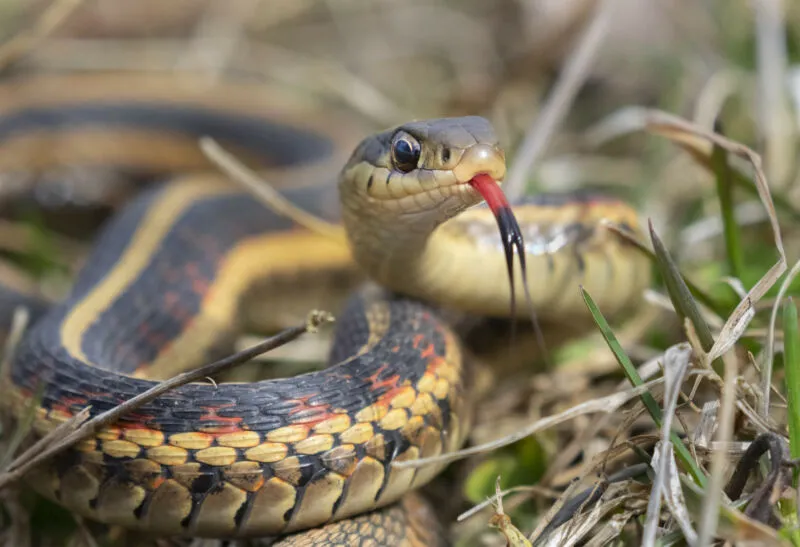
2. Non-Venomous Bites
Even if your snake doesn’t produce venom, it might still be able to bite you. The extent of these bites depends on the type of teeth the snake has, as well as their length and number.
Some snakes have teeth that are so small, they barely scratch human skin, such as the rat snake.
It’s also important to remember that a snake’s size does not necessarily relate to the tooth size. For example, reticulated pythons can grow as long as 16 feet, but they have small teeth and are non-venomous.
A bite from one will break the skin, but it won’t do much damage. Where a reticulated python can get dangerous, is in its ability to constrict prey.
Most non-venomous snakes have aglyphous teeth. These are solid, backward-pointing teeth that have evolved to keep prey from escaping a snake’s mouth.
Bites are usually defensive, meaning that the snake will bite and then immediately retreat. However, if your snake latches on, it’s important to remain calm and not pull the latched snake off. This will cause more damage due to those rear-angled teeth we talked about.
Pro Tip: Ice cold water is a good way to get a snake to remove itself. As a last resort, high percentage alcohol will also work such as vodka or whiskey.
Despite all of this, beginner and docile snakes rarely bite, so while it can happen, it’s not something to be overly worried about unless the snake is a dangerous species.
3. Constriction
Snakes that kill prey by coiling around them and squeezing so tight that their heart stops, are called constrictors. It’s a fascinating way for an animal to hunt, but when some snakes reach upwards of twenty feet in length and weigh hundreds of pounds, they can pose a threat to humans if they aren’t watchful.
A rule of thumb is, only keep a large constrictor if you’ve already had many years of experience keeping medium-sized snakes.
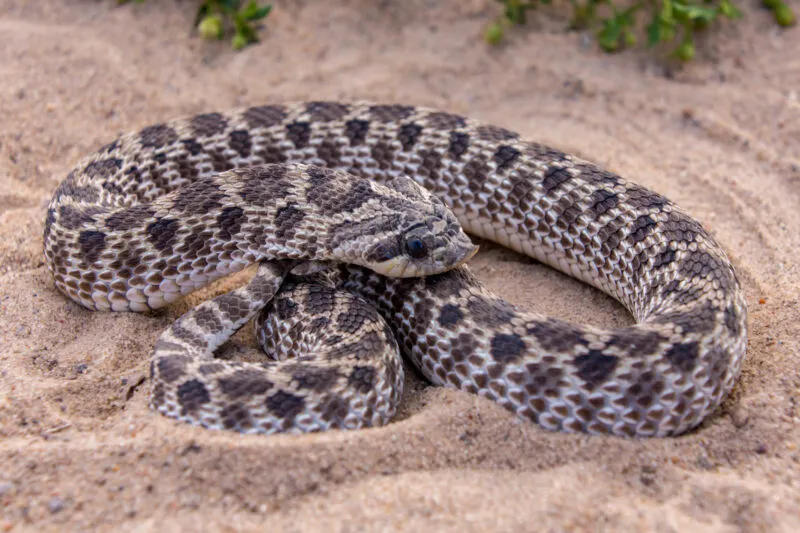
4. Family Pets
It’s great to have several pets as part of your family. But if you’re considering owning a snake that can get large and very, very, hungry… You might want to make sure your chihuahua is out of the room if the snake is ever out of its
There are over 1million attacks on pets from snakes each year in the US alone. Most of these will be from wild snakes, but every few months, you’ll hear about someone’s dog or cat being eaten by their pet python because they didn’t secure its enclosure.
Snakes are escape artists, and if they can get out, they will! Keep this in mind if you have other pets running around your home.
5. Feces
Like any pet, your snake buddy needs to pass urine and feces. Also, like any type of waste product, this can carry with it parasites and bacteria that could be harmful to other pets or humans.
To avoid this issue, keep enclosures clean as much as possible. If your snake roams (something I don’t really recommend, check out my article on snake roaming) then be sure to disinfect any area where it passes urine or feces.
And don’t make the mistake of thinking this isn’t a big deal. Snake waste products have been shown to carry:
- Salmonella
- Botulism
- Campylobacteriosis
- Leptospirosis
But hey, this doesn’t mean you have to wear a hazmat suit around your pet either. Just keep your hands washed after handling, and don’t leave feces lying out for long.
6. Food Hazards
It’s not just your snake’s feces and urine you need to think about as a potential breeding ground for bacteria, but the food you offer your snake buddy, too!
Anything that can rot will invariably contain bacteria. That’s why it’s so important to remove any rotting
Then there are also the associated dangers of handling some
The bottom line? Don’t handle the
Some of these diseases can make pregnant women and children very ill, even grown healthy adults can get sick, so take this form of hygiene very seriously.
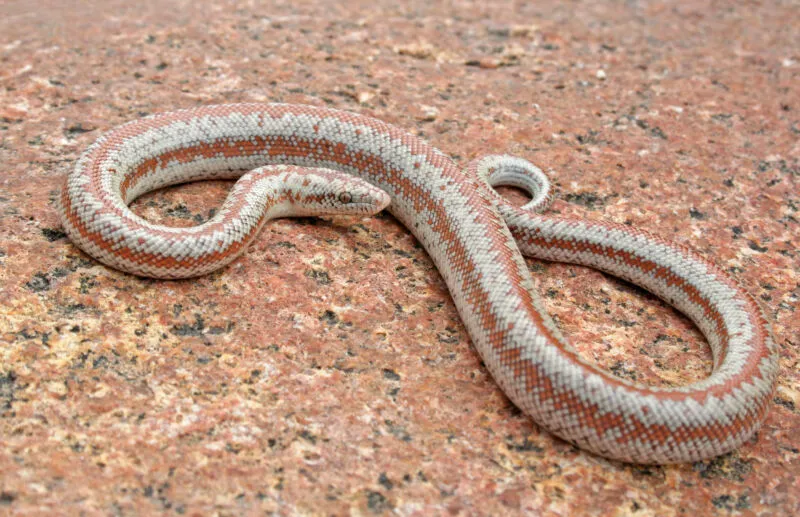
7. Equipment Malfunctions
Like any pet, a snake has evolved to live and thrive in a specific environment. Not only that, but snakes are so widely dispersed throughout nature that one enclosure setup designed to help one type of snake thrive, might actually kill another!
Biologists have discovered more than 3,000 different kinds of snakes living in every region of our planet with the exception of Antarctica, Greenland, Iceland, New Zealand, and Ireland. This encompasses a wide variety of environmental variables.
It is, therefore, dangerous to use the wrong type of heating, humidity, and lighting equipment if not specifically set up for your chosen snake species and its climate.
Other equipment related dangers include:
- Cheap equipment that fails overnight resulting in a dead snake
- Heating elements, lights, and heat mats causing a fire
- Equipment breaking through lack of surge protection
Safe Pet Snakes for Kids and Beginners
Choosing the perfect pet snake for a child or a beginner is difficult. There are so many amazing choices that will enrich each keeper’s life. But if you want a safe bet for a great pet (oh, wow, that rhymed), then here are three pet snakes ideal for children and beginners:
Corn Snakes
Manageable size of 4 – 5 feet. They have great temperaments and take well to being handled. Easy to look after, as well.
Ball Python
You might think a ball python is too big and dangerous for a child. But with the right supervision, these timid snakes will be a great first snake for a child or beginner.
They only grow up to 5 feet, max, and, while their humidity requirements are a little picky, they are generally easy to look after.
Western Hognose
Small, docile, and beautiful. Great for kids and beginners, but make sure it’s a Western hognose, other varieties can get much larger. However, hognose snakes carry a very mild venom.
If your hognose bites you, it is comparable to a bee sting. Still, hognose snakes are known for not biting but “punching” with their noses.
Even if you were bitten, it is unlikely that you get in contact with their venom as their fangs are located quite far in the back of their mouths.
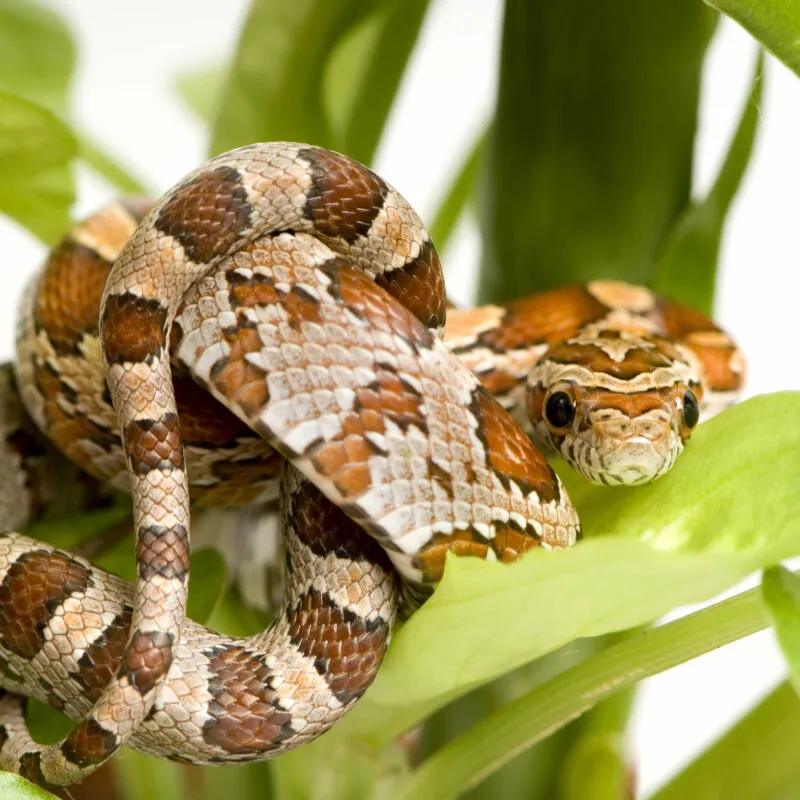
Snakes Children and Beginners Should Avoid
It’s clear that dangerously venomous snakes should be avoided, even for the most experienced of snake owners. However, most people reading about these topics fall into three categories:
- You’re a beginner and want to know which snakes are safe.
- You are considering buying a snake for a child.
- You have owned smaller snakes for a while and want to know which larger snakes are still relatively safe.
In all three categories, there are snakes you would do best to avoid until you are an advanced owner. Here are three specific species I would definitely stay away from:
- Green Anacondas: While they can be docile pets for the right keeper, these maginificent snakes can reach more than 14 feet long. Wait until you have been a snake owner for many years and have the space, and experience, to handle large, powerful snakes.
- Elephant Trunk Snake: These snakes are fully aquatic and so require a huge water enclosure. They are difficult to feed and are extremely quick and often escape their aquariums. They do look amazing, but don’t be tempted unless you are very experienced.
- Reticulated Pythons: Tend to be more docile than some other constrictors. They reach incredible sizes and few keepers genuinely have the space and/or setup to keep them healthy when they get so big.
Which Common Pet Snakes are Dangerous?
Are you still worried that a snake is dangerous? No problem! I’ve put together this handy infographic to help you quickly identify the dangers associated with common breeds – they are listed from least dangerous to most dangerous.

Conclusion
I hope I’ve helped you decide which snakes are dangerous and which are not. Most common pet snakes are not overtly dangerous, and many beginner snakes like the milk or garter snake are harmless.
Buying a pet of any kind is a serious commitment, so don’t feel rushed into making a choice when doing your research.
If you have any questions about snake husbandry and the dangers of keeping these amazing reptiles, please do leave a comment below and I’ll get back to you.
- Enchi Ball Python: A Unique and Stunning Morph of Python regius - March 27, 2025
- Emerald Tree Monitor: The Enigmatic Green Guardian of the Rainforest - March 26, 2025
- The Egyptian Cobra (Naja haje): A Fascinating Serpent - March 25, 2025
